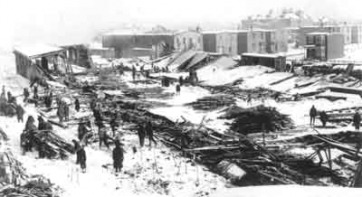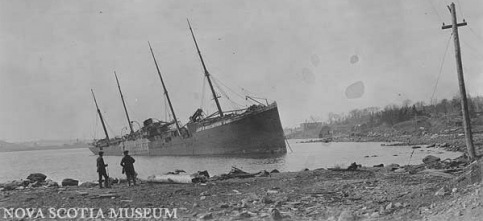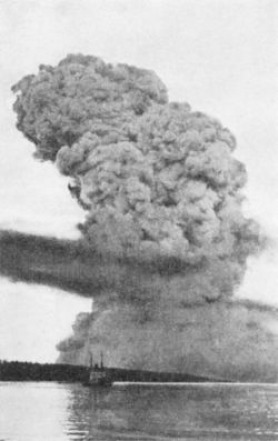HALIFAX EXPLOSION
The Halifax explosion occurred on Thursday, December 6, 1917. The city of Halifax was devastated by the huge explosion of the SS Mont-Blanc (a French cargo ship) that was fully loaded with war time explosives, which collided with a Norwegian ship (SS Imo) in the Halifax harbour. The two ships collided at 8:40 in the morning. The Mont-Blanc (loaded with explosive) caught fire 10 minutes after the collision, and exploded 25 minutes later (9:04). Roughly 3 kilotons of TNT was involved in the explosion. Halifax explosion is the world largest man-made accidental explosion.
IMO, after the explosion
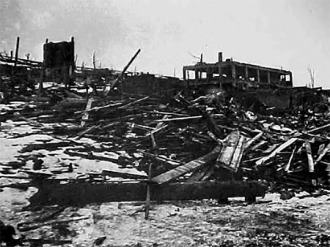
Over 1,900 people were killed in the explosion immediately and within a year the figure had climbed well over 2,000. About 9,000 people were injured. The 20 minutes between the collision and the explosion gave enough time form people to gather near the waterfront. It also gave enough time for other to gather around their windows and because of that 1,000 survivors sustained eye injuries. 325 acres of north Halifax was destroyed in the explosion. The Mont-Blanc was instantly destroyed. Fuel reserves were high in preparation for the winter. Many people who had survived the blast were trapped in these fires. 1,630 houses were destroyed, plus 12,000 houses damaged. This disaster left roughly left 6,000 people homeless and 25,000 without adequate housing. 1,500 victims were buried unidentified. More people in Nova Scotia died in the blast than the Canadian troops in World War 1.
Halifax harbour in the Great War was a major international port and a naval facility. It was a major shipment point for war supplies, troop ships from Canada and North American cities and hospital ships returning the injured. At that time all the ships coming to North America had to report to Halifax for inspection. Halifax was protected by large army garrison with forts, gun batteries, and anti submarine net after the German’s submarine attack in 1916. The fireball of this explosion rose over 1.9 kilometres in the air forming a large mushroom cloud. Since the explosion occurred in the winter, the blast caused stoves, lamps and furnaces to tip or spill, spreading fires throughout Halifax's North End, leaving entire streets on fire.Problems were compounded as firemen from surrounding communities arrived and were unable to use their equipment. However, the winds cooperated, and firemen, soldiers and other volunteers had most of the fires contained by evening.
The cloud after the explosion
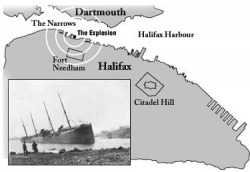
The explosion was felt and heard in Charlottetown, Prince Edward Island 215 kilometers north.Also 360 kilometers east in the North of Cape Breton. A portion of the Mont-Blanc`s weighing 517 kilograms was thrown 3,780 meters west of the blast.
Relief efforts were set in motion. Money came from as far as China and New Zealand. Canadian government donated $18 million; and the British donated $5 million dollars. The Haligonians (people living in Halifax) remember the generosity of the state of Massachusetts, which donated $750,000 in money and goods.
BIBLIOGRAPHY
Webs:
- Kitz, Janet F. "The Halifax Explosion." Maritime Museum of the Atlantic. March 29, 2000. 18 Feb 2009 <http://museum.gov.ns.ca/mma/AtoZ/halexpl.html>.
Books:
- Glassner, Joyce. The Halifax Explosion. Alberta: Altitude Publishing Canada, 2003.
- Eaton, Diane. Canada a Nation Unfolding. Toronto: McGraw-Hill Ryerson, 1994.
BY: RUTAB KHAN
